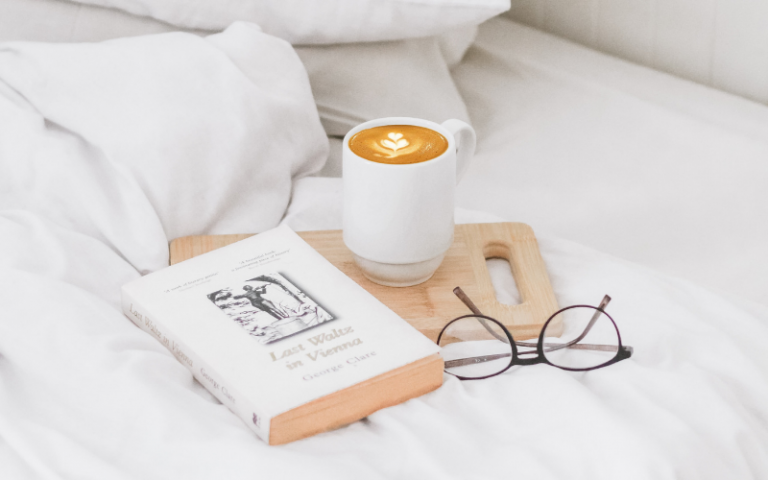Breathing Techniques to Manage Stress and Anxiety
7 May 2021
Stress and anxiety are emotions that we often feel, and might be heightened during assessments. Student Counsellor Sarah Carter has some tips to help you manage with helpful breathing techniques.

Stress and anxiety are fundamental human emotions that we will all feel at times.
Human beings evolved stress and anxiety for good reason and they have a healthy function, acting as a motivating force to take action. They’re part of our ancient survival system. This system evolved so our ancestors could react quickly to protect themselves from danger e.g. from a predator.
When activated, the stress system produces instant physiological responses that shut down thinking and prepare us to take action e.g. fight or flee. These responses include increased heart rate and blood flow to the muscles where it’s needed in time of danger and away from areas of the body where it’s not needed e.g. the stomach, so digestion slows down. They would originally have been short-lived, dissipating when the stressful or anxiety-provoking situation was resolved. The stress system wasn’t designed to handle the multiple, complex stressors of modern life and can sometimes cause more problems than it solves e.g. by shutting down thinking and producing unnecessary agitation in the body, which can then exacerbate stress and anxiety.
By understanding how the stress system works, we feel less anxious when it produces these physical sensations and can better manage its effects.
Stress, anxiety and the body
Stress and anxiety are carried in the body and so one of the most important places to counteract them is in the body.
Anxiety activates the sympathetic nervous system, and the physiological response is based on adrenalin, the hormone of fear, which has an accelerating function at times of danger. The parasympathetic nervous system acts like a brake. It brings on the "rest and digest" response that calms the body down after the danger has passed. By learning to consciously activate the parasympathetic nervous system, we can calm ourselves when we’re over-stressed or anxious, and restore our capacity to focus, think more clearly, and get perspective on things.
Breathing plays an essential role in anxiety. When we’re anxious we may breathe rapidly, taking in more oxygen than the body needs, and so hyperventilate. Alternatively, our breathing may become erratic and shallow which lowers oxygen. Under or over-breathing produces sensations in the body e.g. tingling or light-headedness, which can exacerbate anxiety. Every cell in the body needs oxygen to function but brain cells are particularly sensitive to oxygen levels and slight changes in these can alter the way a person thinks, feels and behaves e.g. when the oxygen content is lowered it can lead to an impulse to run away or to irrational, confused thinking. By learning to take slow, calm breaths, you get the right amount of oxygen to your brain and can reduce your general level of anxiety. With practice, you’ll be better able to use it to reduce your anxiety when you’re in a specific, anxiety-provoking situation.
Diaphragmatic Breathing
People who are anxious tend to breathe rapidly in their upper lungs. If we correct this negative breathing pattern, inhaling and exhaling slowly into the lower lungs, we can reduce anxiety. You can help yourself master diaphragmatic breathing by lying on your back and placing a small book on your belly. When you breathe in, make the book go up slowly and when you breathe out, make the book go down slowly. Shifting the centre of breathing lower in your body will help you feel more settled, relaxed and in better control of yourself.
Alternatively, either lying down or sitting, put a hand on your belly, and as you breathe in through your nose, feel your belly expand like a balloon. When you breathe out through your mouth - relaxing the muscles of your face, jaw, shoulders and stomach - feel the balloon deflate. You can slow down your breathing by counting e.g. taking four seconds to inhale, holding the breath for two seconds, and then exhaling for a count of six. Repeat this for 10 breaths and try to practice three times a day.
Box Breathing
Box breathing is another stress management technique. Picture a box with equal sides or find something square around you to focus on. As you take in a breath through your nostrils for four counts, visualize traveling up one side of the square. Next, imagine moving across the top of the square during four counts of holding your breath. Then exhale for four counts as you travel down the right side of the box, and hold your breath for four counts as you travel across the bottom of the square. Repeat for 10 breaths. This visual provides a helpful anchor for your attention and enables you to get into the flow of rhythmic breathing.
The mental and physical calming effects of this technique are noticeable within just a few minutes. Regular practice increases resilience to stress.
 Close
Close

